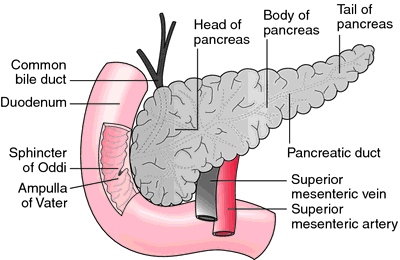The pancreas is a weird and mysterious organ. It’s considered a solid organ, but it doesn’t follow any of the usual rules. Today, I’ll review the grading system for injuries to this organ. Then over the next few days, I’ll review pancreatic injury management in adults and children.
The AAST has developed quite a few organ injury grading schemes over the years (32 to be exact). These are actually important to know, because they help us accomplish several things:
- Objectively describe the degree of injury
- Choose management strategies
- Develop research cohorts so meaningful studies can be constructed
There are 5 grades that follow the usual AAST schema (numbered I-V). Unfortunately, I have not been able to find any quality diagrams, so you’ll just have to use your imagination.

- Grade I: Minor contusion or laceration of the parenchyma without duct involvement
- Grade II: Major contusion or laceration of the parenchyma without duct involvement
- Grade III: Distal duct laceration or transection. Distal means to the left of the superior mesenteric vein
- Grade IV: Proximal transection or parenchymal injury not involving the ampulla (note that this was corrected after publication of the original scale in 1990, which omitted the word not)
- Grade V: Massive disruption of the pancreatic head
Tomorrow I’ll delve into diagnosis and management options in adults.
Related posts:
Reference: Pancreatic organ injury scale. J Trauma 30:1427–1429, 1990.

